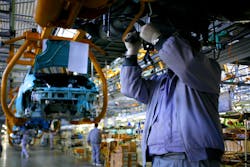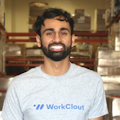Tesla, Inc. has quickly gained the mindshare of the automotive industry and the world, in large part to CEO Elon Musk. His management style has set a significant precedent on Tesla’s safety culture—for better and for worse.
Tesla has significantly improved its safety over the past few years by taking a more methodological approach and making a key safety hire. That has helped Tesla to improve its Total Recordable Incidence Rate (TRIR). However, the COVID-19 pandemic has resurfaced past problems and revealed how Tesla’s safety culture can be diminished when management prioritizes production over people.
A Focus on Improvement
Laurie Shelby, CIH, CSP, is the vice president of Environmental, Health & Safety at Tesla. She joined the company in 2017 to address its safety issues that were below the industry average at the time. Shelby was recruited because of experience at Alcoa, where her contributions to its safety record were well-known.
In the three years prior to Shelby’s arrival, Tesla’s Fremont, Calif., plant had an above-average TRIR per 1000 cars produced:
- 2014: 8.4 (Industry Avg: 7.3)
- 2015: 8.8 (Industry Avg: 6.7)
- 2016: 8.1 (Industry Avg: 6.2)
When Shelby first stepped into the role, she was hired to make Tesla “The Safest Car Factory in the World.” There was already a slight improvement in 2017, but Shelby had her work cut out for her.
Based on her 25 years of focus on workplace safety, Shelby stated in her post on Tesla’s blog that the most considerable improvements are attained by:
- Listening to employees
- Using common sense
- Being proactive
- Ensuring the culture values safety
- Measuring safety
Under Shelby’s leadership, Tesla now takes a more methodological, observative approach to safety. The company looks at every aspect of the working environment: equipment, ergonomics, people’s responses to hazards and how all these moving parts interact. The EHS team at Tesla emphasizes that they can only make safety improvements if they understand how the work is being performed daily.
A large part of improving safety is to measure safety numbers, which allows you to see trends via correlation or causation. In their Fremont location alone, there are more than 10,000 factory workers, meaning the EHS team has a plethora of data points to review. When capturing data, Tesla is not just logging TRIR or DART; they’re capturing properties of safety incidents, workplace hazards and response times, among others.
For example, Shelby noticed that two-thirds of all recorded incidents involved ergonomic issues stemmed from repetitive tasks. Improving this one issue in ergonomics compounds and significantly enhanced Tesla’s overall TRIR.
Shelby’s human-centered approach has proven highly effective. Since Shelby’s joined Tesla, the company’s safety record has improved every year:
- TRIR decreased by 25% from 2016 to 2017.
- TRIR decreased another 50% from 2018 to 2019.
- TRIR is now 5% better than the industry average (6.279).
See the full report here.
The Impact of Tesla’s Culture on Safety
The negatives of Tesla’s workplace culture are no secret. Under Musk’s leadership, Tesla has established a culture of profits at the expense of workers’ well-being.
As production efficiency increases, the more they ignore their mission of becoming the safest factory in the world. This was especially true in 2020. When COVID-19 emerged, it seemed as though the safety culture principles dissipated as the company ignored workers’ safety.
Employees were required to work even as the state of California sanctioned Tesla to shut down back in March 2020 and again in June-July 2020, which categorized Tesla as non-essential work. As the pandemic intensified, workers spoke publicly of the working conditions inside the plant. Some of the claims stated that factory workers were required to work longer than the number of hours permitted by California’s Health Order. The sudden escalation in production made employees feel overworked, and COVID-19 protocols and measures weren’t be enforced or followed, which made workers feel uncomfortable. Tesla permitted workers to go home for their concerns, but they were sent termination notices the next day.
As of November 2020, the state of California has permitted Tesla to remain open and has adopted strict COVID-19 protocols for operating.
Tesla’s hiring of Shelby improved its safety benchmarks significantly, but the way the automotive manufacturer and its management have handled the pandemic raises the question of whether Tesla really want to be the safest car factory in the world or if safety is just a means to an end?
Arjun Patel is the CEO of WorkClout, a venture-funded technology company that provides QHSE software to the manufacturing, facility management and construction industries. He is the son of a manufacturing owner and was a former management consultant. He currently resides in Los Angeles and focuses a lot of his attention on safety strategies for the industrial sectors.
